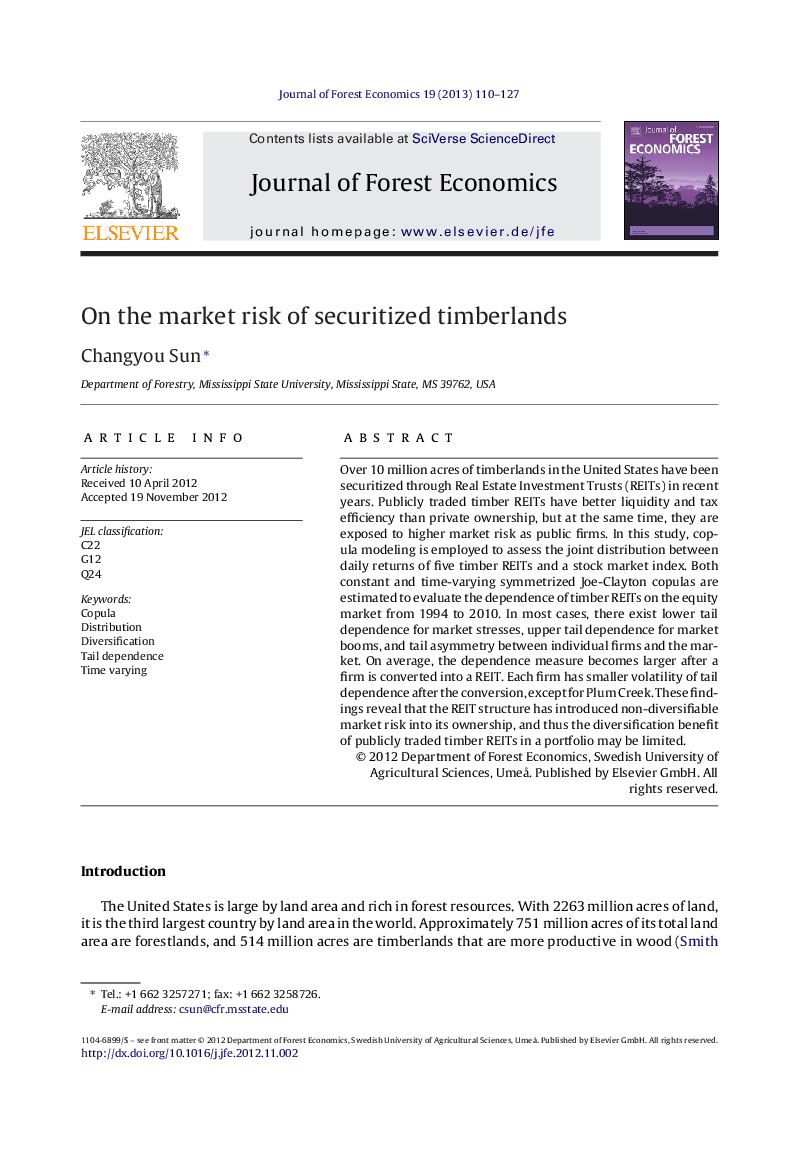| Article ID | Journal | Published Year | Pages | File Type |
|---|---|---|---|---|
| 92098 | Journal of Forest Economics | 2013 | 18 Pages |
Over 10 million acres of timberlands in the United States have been securitized through Real Estate Investment Trusts (REITs) in recent years. Publicly traded timber REITs have better liquidity and tax efficiency than private ownership, but at the same time, they are exposed to higher market risk as public firms. In this study, copula modeling is employed to assess the joint distribution between daily returns of five timber REITs and a stock market index. Both constant and time-varying symmetrized Joe-Clayton copulas are estimated to evaluate the dependence of timber REITs on the equity market from 1994 to 2010. In most cases, there exist lower tail dependence for market stresses, upper tail dependence for market booms, and tail asymmetry between individual firms and the market. On average, the dependence measure becomes larger after a firm is converted into a REIT. Each firm has smaller volatility of tail dependence after the conversion, except for Plum Creek. These findings reveal that the REIT structure has introduced non-diversifiable market risk into its ownership, and thus the diversification benefit of publicly traded timber REITs in a portfolio may be limited.
